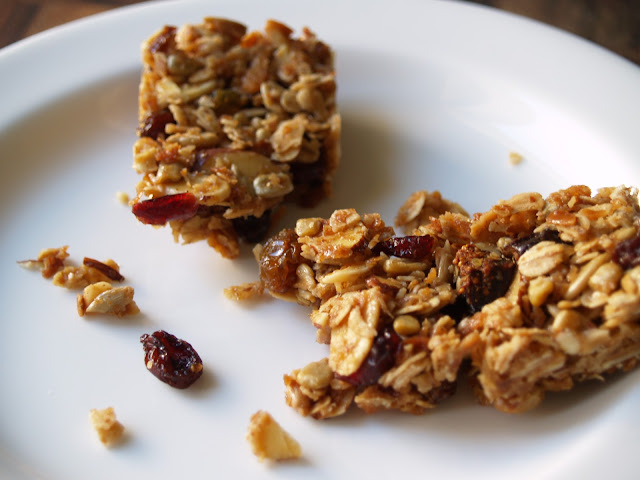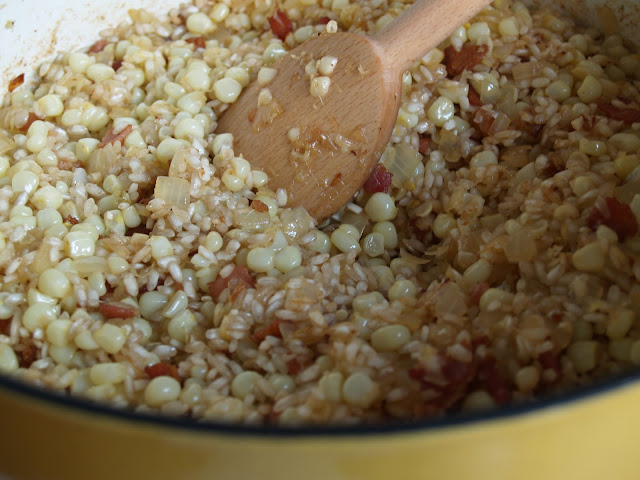This is part II to my previous post on marshmallows. After all, how can you make marshmallows with the sole intention of using them for s'mores, and not make graham crackers to go along with them? You can't. I researched a lot of graham cracker recipes before I landed on the one you see before you. It comes from Nancy Silverton's cookbook, Pastries from the La Brea Bakery. It's been floating around the internet for awhile now, and is considered by many to be the quintessential recipe for graham crackers. I know I'm not contributing anything new here, but I thought I'd share the recipe none the less.
Traditionally, graham crackers are made with graham flour (a type of whole wheat flour), originally developed in the 19th century by a Presbyterian minister by the name of Sylvester Graham. Graham initially developed his cracker as a health food and were a staple in his Graham diet. Though graham flour can be found at health food stores and specialty food stores, realistically, not many of us keep it on hand. The recipe below uses regular unbleached all-purpose flour or a combination of pastry flour and whole wheat flour. I'm sure Sylvester is rolling in his grave and would probably consider the recipe below as sacrilege, but it's certainly more convenient and can be made on a whim from ingredients already in your home.
HOMEMADE GRAHAM CRACKERS
Recipe from Nancy Silverton, Pastries from the La Brea Bakery
Ingredients:
2½ cups plus 2 tbsp. (375 grams) unbleached all-purpose flour (or substitute ½ cup whole wheat flour or 1 cup whole wheat pastry flour with part of the all-purpose flour)
1 cup (176 grams) dark brown sugar, lightly packed
1 tsp. (6 grams) baking soda
¾ tsp. (4 grams) kosher salt
7 tbsp. (100 grams) unsalted butter, cut into 1/2-inch cubes and frozen
1/3 cup (114 grams) honey
5 tbsp. (77 grams) whole milk
2 tbsp. (27 grams) pure vanilla extract
To make the dough: Combine the flour, brown sugar, baking soda, and salt in the bowl of a food processor fitted with a steel blade (or in the bowl of an electric mixer fitted with the paddle attachment). Pulse several times (or mix on low speed) to incorporate. Add the frozen butter and pulse several times (or mix on low speed) until the mixture is the consistency of course meal (you can also mix the ingredients by hand using a pastry blender).
In a small bowl, whisk together the honey, milk, and vanilla extract. Add to the flour mixture and pulse on and off several times (or mix on low) until the dough just comes together and clears the sides of the bowl. It will have a soft and slightly sticky consistency. Turn out the dough onto a large sheet of plastic wrap lightly dusted with flour. Pat the dough into a rectangle about 1-inch think. Wrap the dough tightly and chill for about 2 hours or overnight.
To roll out the dough: Divide the dough in half and return one half to the refrigerator. Lightly flour a clean work surface, and roll the dough into a long rectangle about 1/8-inch thick. Don't worry if the dough is slightly sticky, simply flour when necessary (a dough scraper comes in handy if part of the dough sticks to your work surface). Using a ravioli cutter, pizza cutter, or sharp knife, trim the dough to be 4-inches wide (reserve the scraps and save them to roll out again). Horizontally cut the dough every 2½ inches. Lightly score a vertical line down the center of the dough using a ravioli cutter or pizza cutter (be careful not to cut all the way through the dough). Use a toothpick or skewer to prick the dough to form two rows of dots on each side of the dividing line. (At this point, feel free to sprinkle the dough with a cinnamon sugar topping- 3 tbsp. sugar to 1 tsp. cinnamon).
Place the crackers on one or two parchment-lined sheet pans. Pre-heat the oven to 350 degrees F. Chill the shaped dough until firm, about 30 to 45 minutes in the refrigerator, or 15 to 20 minutes in the freezer. Repeat with the second batch of dough. Gather any scraps and shape into a ball. Chill until firm, and re-roll.
To bake the crackers: Place the crackers in the pre-heated oven for about 15 to 20 minutes, until browned and slightly firm to the touch (rotate baking sheets halfway through to ensure even baking). Use a spatula to transfer the crackers to drying racks. Let cool completely before placing in well-sealed containers. The crackers will keep well at room temperature for about a week.



















































